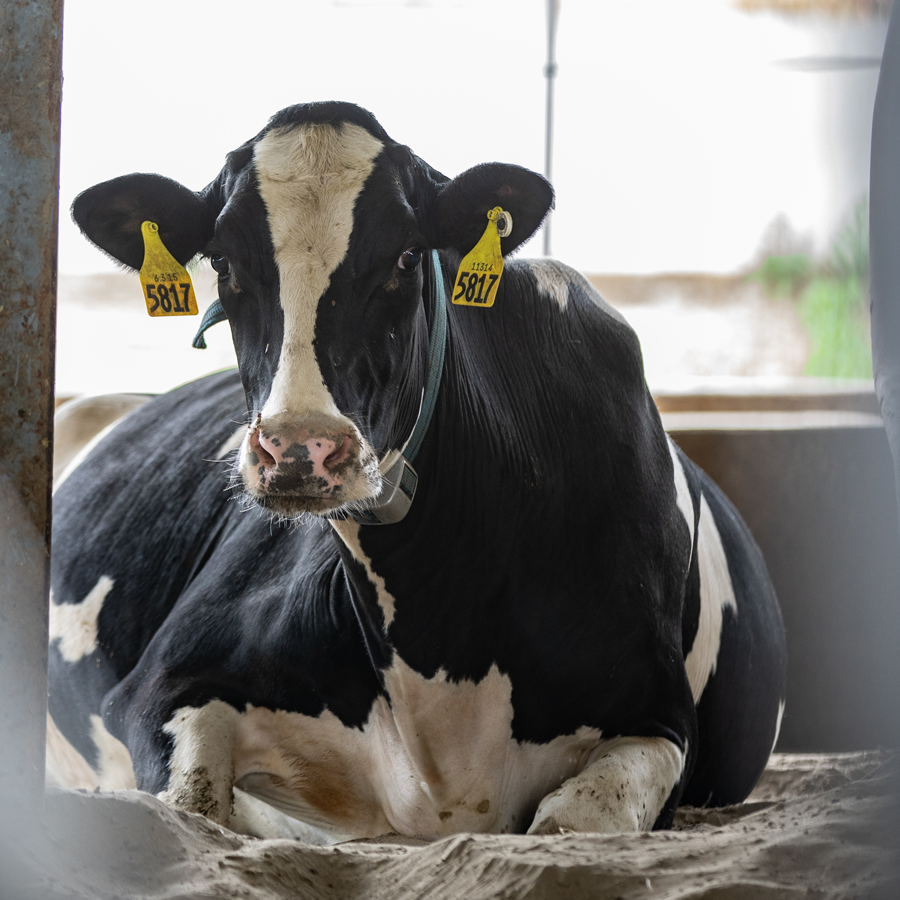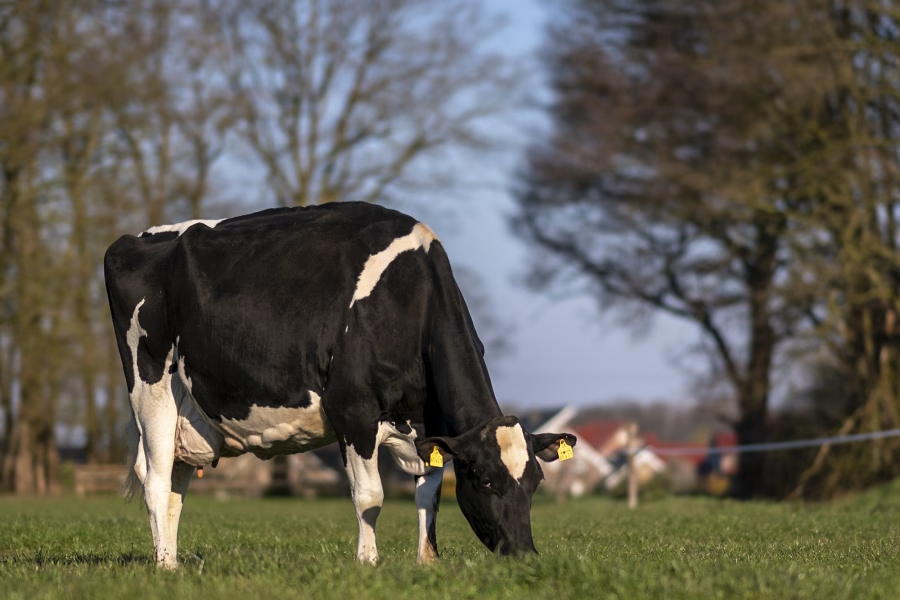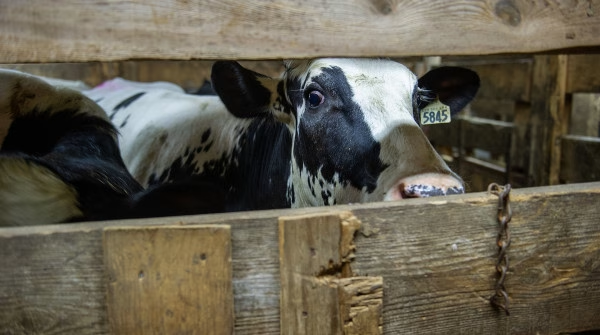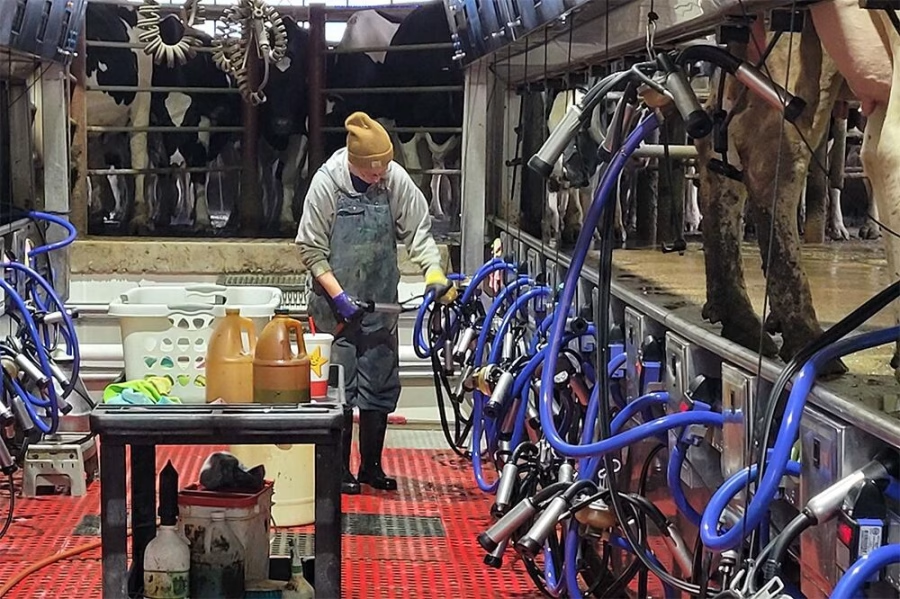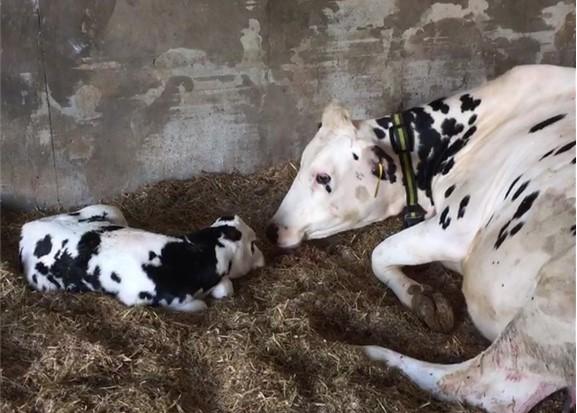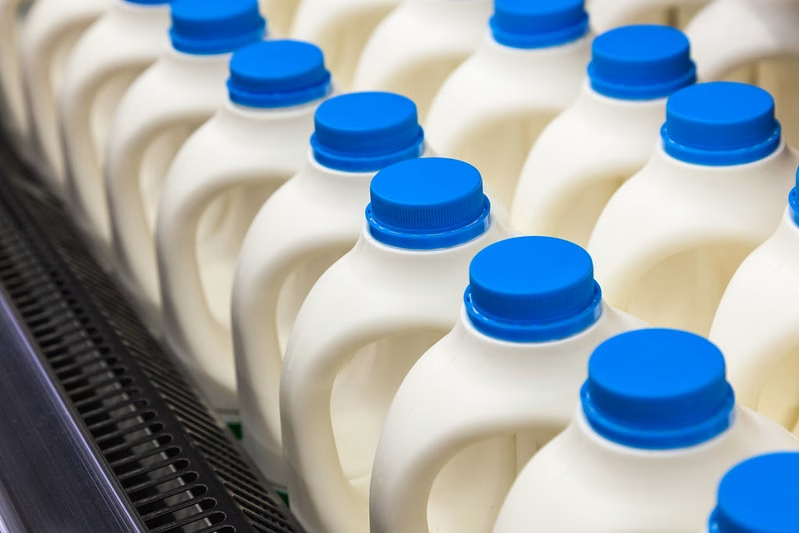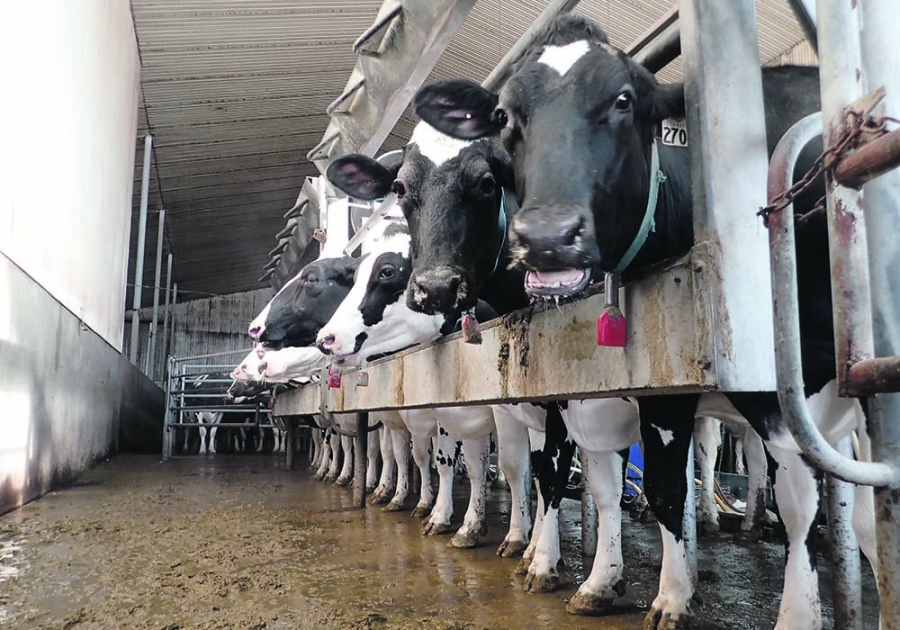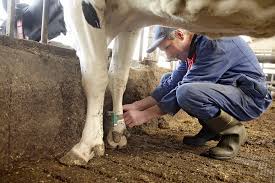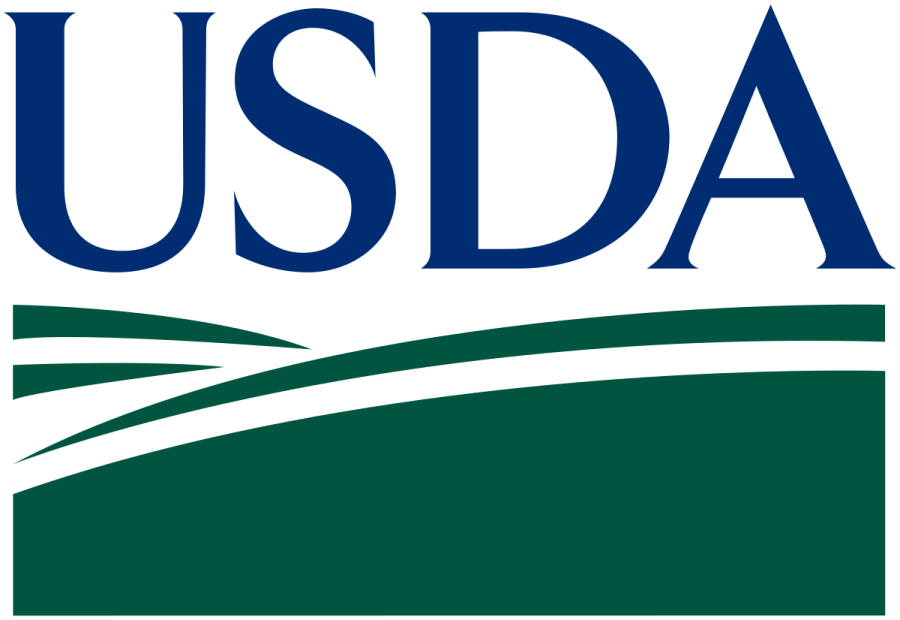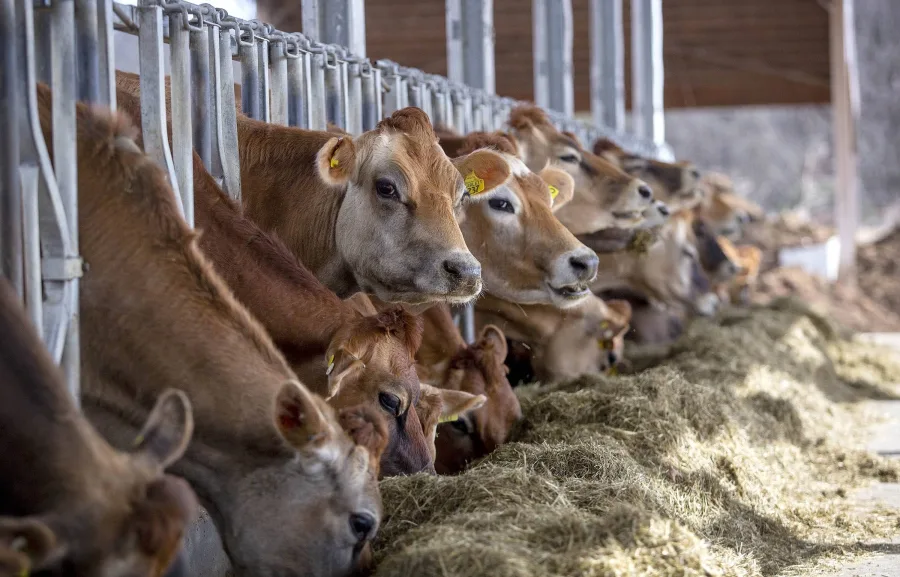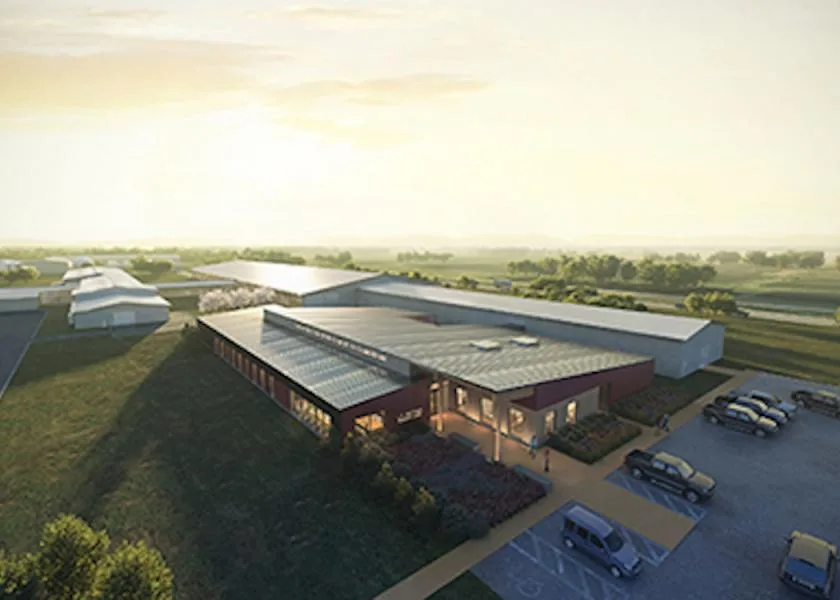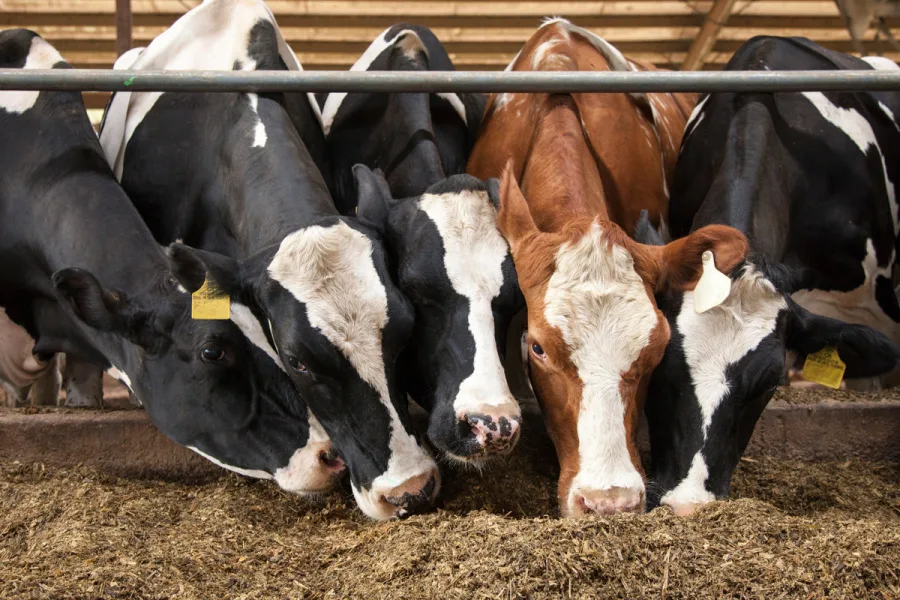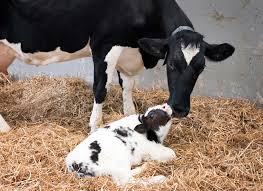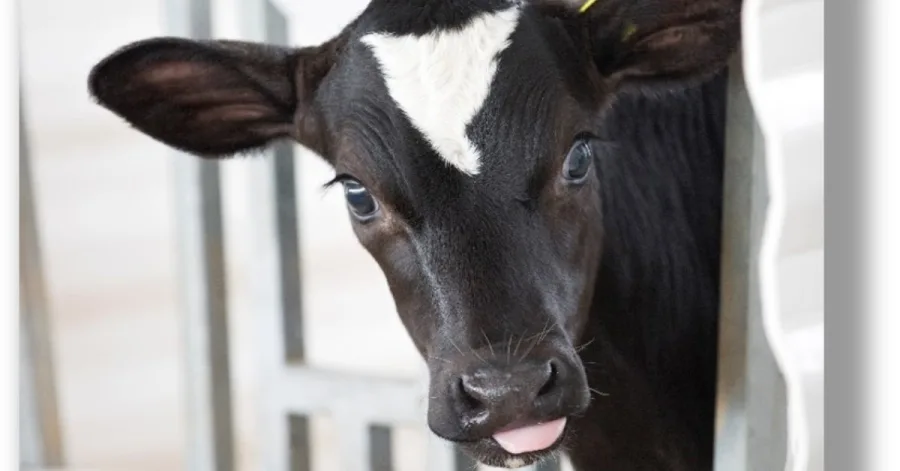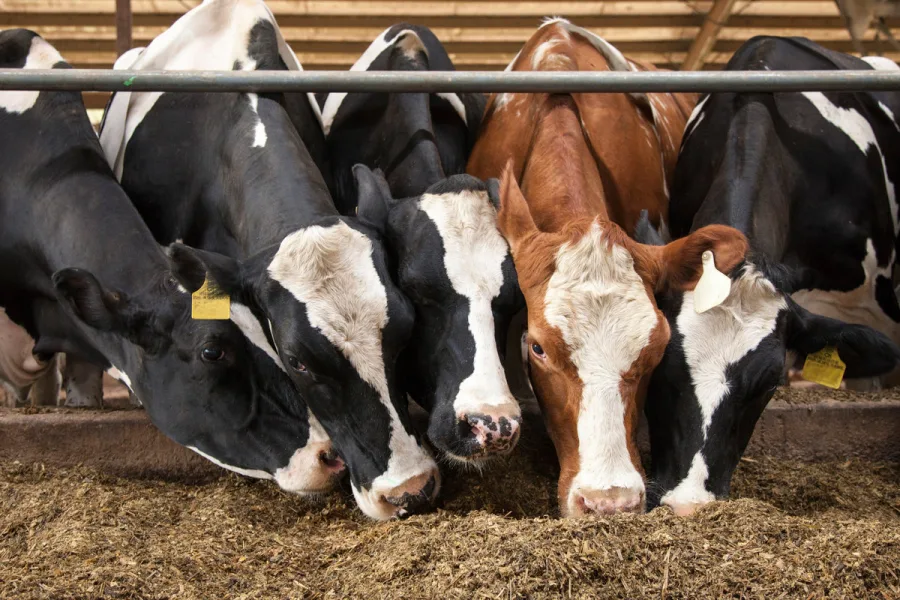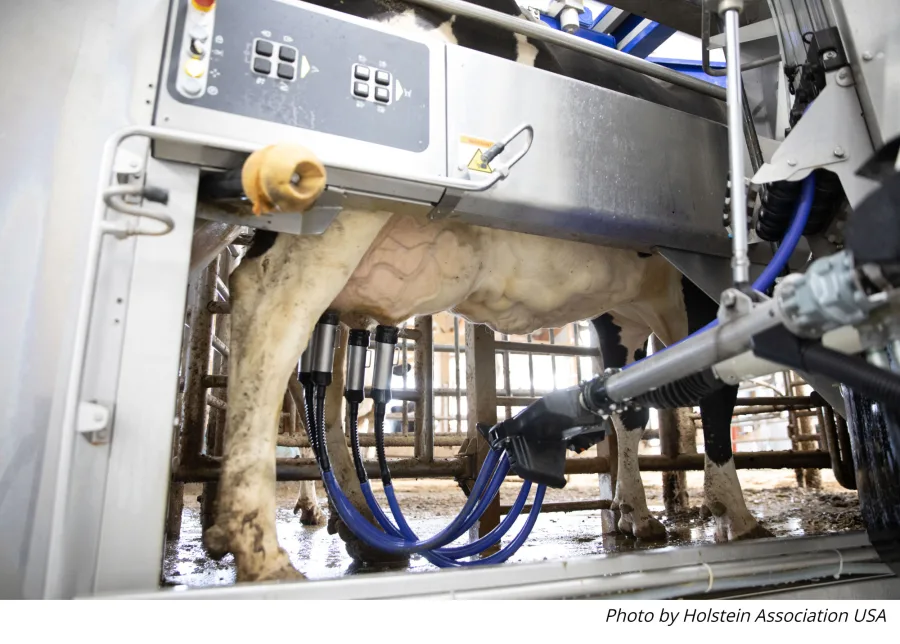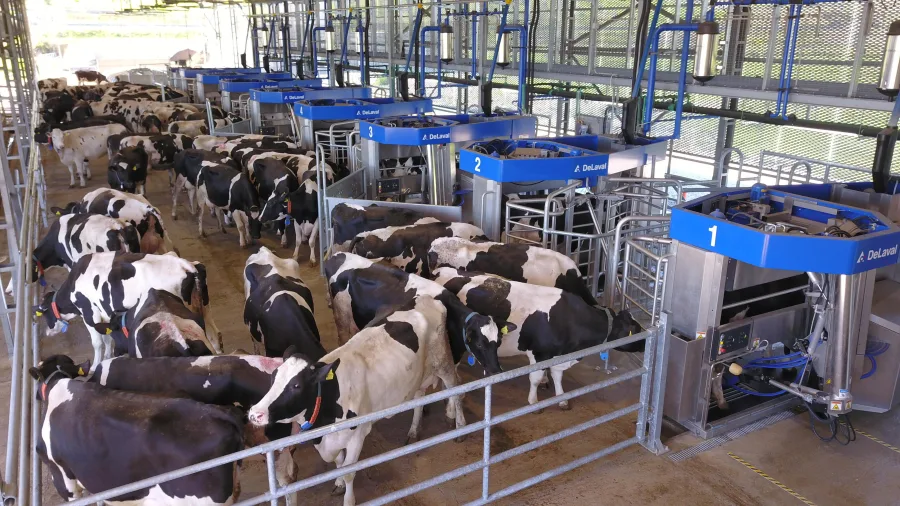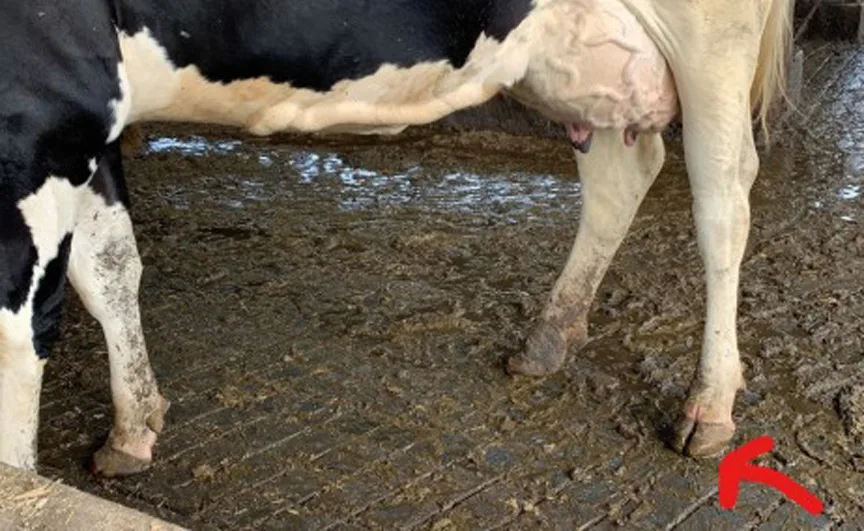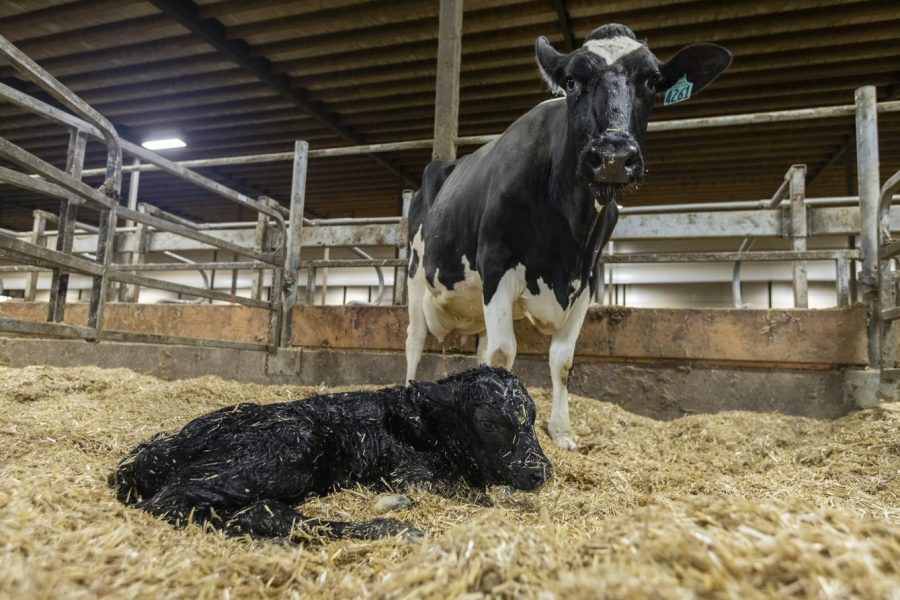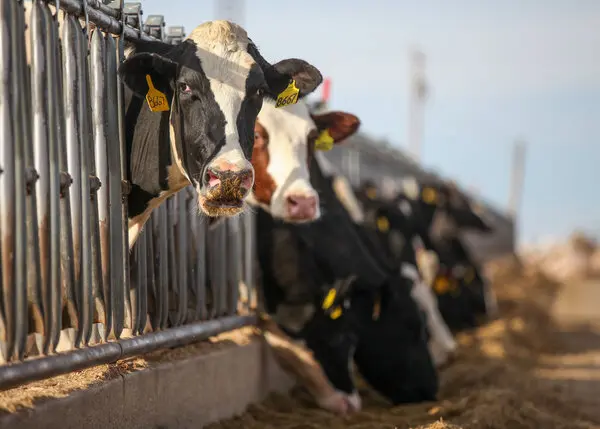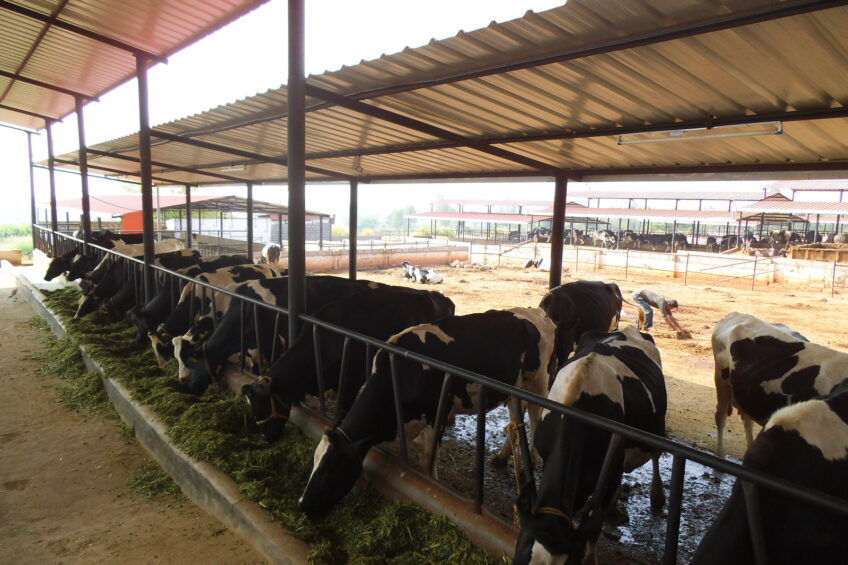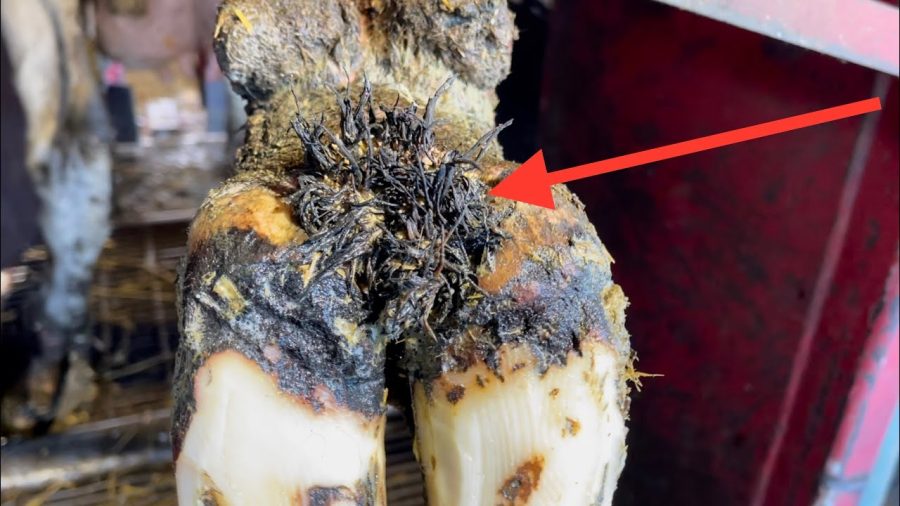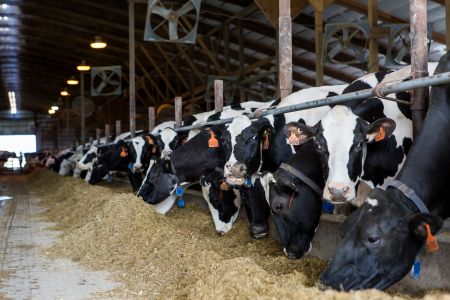Master dry cow management for healthier bovines and higher milk yields. Discover essential strategies to optimize udder recovery and nutritional status. Ready to improve?
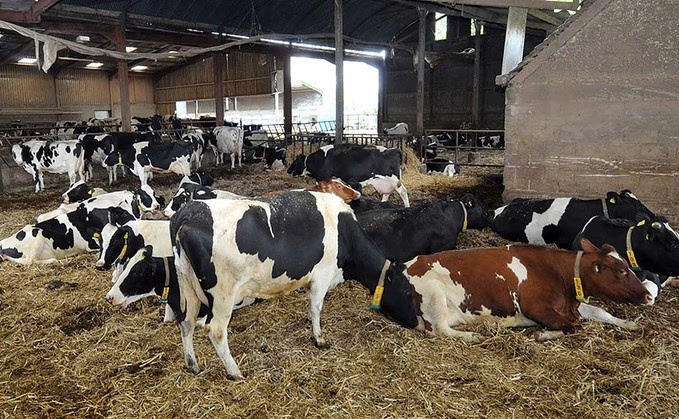
Do you think the dry period is a carefree vacation for dairy cows? Think again. Dry cow management is often underestimated, yet it’s pivotal for your herd’s productivity. This phase is essential for ensuring optimal cow health and maximizing milk yields in the subsequent lactation cycle.
Underestimating the importance of dry cow management can reduce milk production, cause metabolic diseases, and result in poor fertility. It’s a misconception that dry cows require minimal attention. Strategic planning and meticulous care are crucial to prepare the udder for future milk production and stabilize the cow’s nutritional status to prevent health issues. Neglecting effective dry cow management is not an option.
Unlocking the Potential of Dry Cow Management: Objectives and Strategies
A pivotal aspect of dry cow management is recognizing the primary objectives of this period. The primary goal of the dry period is to let the udder recover from the previous lactation, which is essential for maintaining udder health and optimizing milk production in the next cycle.
Additionally, this period prepares the cow for the upcoming lactation. Ensuring optimal nutritional status is critical to supporting this transition and reducing the risk of metabolic diseases and reproductive issues post-calving.
This involves more than dietary adjustments—it requires an integrated approach. Monitoring body condition scores, managing feed space, employing strategies like trace minerals, and adjusting dietary cation-anion balance (DCAB) are all crucial. These measures aim to prevent health issues like hypocalcemia and ensure a smooth transition into the next lactation, maintaining farm productivity and animal wellbeing.
Understanding the Imperative of Drying Off: Risks and Rewards
Drying off cows poses significant challenges, primarily the risk of mastitis due to milk accumulation and udder inflammation. When milking stops abruptly, milk builds up, putting pressure on the udder and creating an entry point for bacteria, leading to discomfort and infections.
Despite these risks, drying off is essential for the cow’s well-being and productivity. Without a dry period, cows face reduced future milk production, over-conditioning, and poor fertility. Thus, the drying-off process remains crucial for the long-term health and productivity of the herd.
Strategic Planning for Seamless Transition: Optimal Dry Period Management
Effective dry period management is not just a break from milking but a critical period that influences the future health and productivity of the dairy cow. With strategic planning and proper nutrition, you have the power to ensure optimal outcomes.
A structured approach involves maintaining a dry period of 40 to 60 days. Deviating from this range can lead to issues like poor udder health, reduced milk yield, or over-conditioning, which can cause metabolic disorders such as ketosis.
Nutritional strategies are vital. Tailored diets for the early and late stages of the dry period help cows maintain optimal body condition and prepare for the demands of lactation. The far-off and close-up diets adjust energy levels to prevent problems like hypocalcemia, demonstrating the importance of focused nutritional management.
In conclusion, the dry period is a cornerstone of dairy cow health management. Diligent and informed management during this time is critical for recovery and preparation for the next lactation cycle, leading to better milk production, improved fertility, and overall herd health.
Evidence-Based Optimal Dry Period Length: Achieving the Balancing Act of Udder Health and Milk Yield
Research consistently supports a dry period length of 40-60 days for dairy cows to ensure udder recovery and preparation for the next lactation. Shorter dry periods can lead to mastitis and reduced milk yields due to insufficient time for mammary gland regeneration. Conversely, longer dry periods often result in over-conditioning, predisposing cows to metabolic disorders like ketosis and fatty liver. This condition exacerbates inflammation during the transition, harming overall cow health and performance. Adhering to the recommended dry period length is crucial for maximizing udder health and optimizing milk production in dairy herds.
Mastering Nutritional Management: Crafting Optimal Diets for the Dry Period
As we delve into nutritional management during the dry period, we recognize the significance of tailored dietary strategies, which are crucial to supporting cow health and productivity. Recommended approaches involve a bifurcated diet plan: the far-off and close-up diets.
During the first five weeks, the far-off diet features low energy density to maintain but not increase body condition. Anecdotal evidence and research suggest that managing energy intake helps prevent over-conditioning, a precursor to metabolic diseases.
In the last three weeks, the close-up diet, with moderate energy density, has sustained body condition and ensured rumen health for the upcoming lactation period. Additionally, preventing hypocalcemia by adjusting dietary minerals or adding anionic salts is crucial.
Large farms can manage two distinct diet groups, allowing precision feeding, a practice that tailors feed rations to individual cow needs, and better control over nutritional intake. Smaller farms, however, may benefit from a single diet that balances the far-off and close-up needs due to space and animal number constraints. While less specific, this method avoids logistical and labor issues for multiple feeding regimens.
Effective feed bunk management and 30 inches of bunk space per cow can alleviate space and feeding behavior challenges. Additionally, novel approaches like using late-maturing crops or planting later can help reduce feed energy content, easing the dietary balance during the dry period.
Ensuring Balance and Health: The Far-Off Diet Phase for Optimal Dry Cow Management
The far-off diet phase, covering the initial five weeks of the dry period, focuses on maintaining the cow’s body condition without excessive weight gain. This period allows the cow to rest and recover after lactation. Thus, the diet is low energy density, balancing nutritional needs and minimizing the risk of metabolic disorders like ketosis in the subsequent lactation.
This diet includes fibrous components such as hay and pasture, with minimal concentrates to avoid high starch and energy levels. Maintaining a body condition score of 3.0 to 3.5 on the 5-point scale, which assesses the cow’s fat reserves and muscle tone, is crucial for a smooth transition into the close-up period, where diet adjustments happen for calving and lactation.
Farmers manage the cow’s energy balance through a controlled, low-energy diet, supporting her health and productivity. Proper feed bunk management ensures each cow has sufficient access to feed and can eat comfortably, enhancing intake and well-being. This phase is critical for successfully transitioning to the next production cycle, highlighting the importance of strategic nutritional planning during the far-off period.
Navigating the Final Stretch: Crafting the Ideal Close-Up Diet for Dry Cows
The close-up diet is pivotal in preparing cows to shift from dry to lactating. Administered during the final three weeks, it features a moderate-energy density mix to maintain body condition and prime rumen health. Key elements include adequate fiber and a balanced grain-to-forage ratio, which prevent digestive issues and ensure consistent feed intake.
Preventing hypocalcemia (milk fever) is paramount. Strategies include manipulating Dietary cation-ion balance (DCAB) with anionic salts to mobilize calcium from bones and boost blood calcium at calving. Managing mineral intake by reducing calcium and supplying trace minerals like magnesium and phosphorus is crucial for calcium metabolism and bone health.
Optimal feed bunk management, sufficient space, and a clean, stress-free environment further ensure a smooth transition. The close-up diet is not just nutritional; it’s an integral management strategy for safeguarding cow health and maximizing future productivity.
The Bedrock of Successful Dry Cow Management: Vigilant Body Condition Score (BCS) Monitoring
One of the most critical aspects of dry cow management is vigilant body condition score (BCS) monitoring. The ideal BCS for dry cows lies between 3.0 and 3.5 on the 5-point scale. This range is crucial for cow health, smooth transitions into lactation, and enhanced reproductive performance.
Monitoring BCS during the dry period allows timely adjustments in nutritional strategies, preventing metabolic diseases and promoting high-quality milk production. Over-conditioned cows, scoring above 3.5, face higher risks for conditions like ketosis and fatty liver, which can hinder productivity and fertility.
Achieving and maintaining an ideal BCS is often complicated by high-starch feeds available in various regions. This necessitates a tailored approach to diet formulation and constant adjustments based on cow condition and feed quality.
Ultimately, effective BCS monitoring and management are vital. Maintaining an optimal BCS ensures smooth lactation transitions, higher-quality milk, and fewer calving issues, boosting farm performance and profitability.
Maintaining an Optimal Body Condition Score (BCS): A Cornerstone for Dairy Cow Health and Farm Profitability
Maintaining an optimal Body Condition Score (BCS) is crucial for dairy cow health, milk production, and reproductive performance. Research shows that cows with a BCS of 3.0 to 3.5 during the dry period produce higher-quality milk and have better reproductive efficiency, including entering estrus sooner and having higher conception rates. These cows also experience smoother calving and healthier calves.
Over-conditioned cows, however, face significant risks, such as metabolic diseases like ketosis and fatty liver, leading to systemic inflammation. This hampers milk yield and triggers health complications. Elevated BCS increases fat mobilization during early lactation, worsening metabolic disorders and leading to poorer fertility and slower recovery post-calving.
Vigilant BCS monitoring and tailored nutrition are essential. Farm managers can reduce health risks, improve reproductive outcomes, and boost profitability by maintaining an optimal BCS. Adequate diet and management during the dry period are critical to a successful lactation phase.
Targeted Care for Vulnerable Groups: Over-Conditioned, Nulliparous, and Calving Disorder Cows
High-priority cow groups include over-conditioned cows, first-calf (nulliparous) cows, and those with calving disorders such as dystocia, stillbirths, twins, and retained placenta. These cows face elevated risks due to heightened systemic inflammation during the transition period, increasing their likelihood of disease and poor performance.
Over-conditioned cows often suffer from metabolic issues like ketosis and fatty liver, affecting their health and productivity. First-calf cows, dealing with the demands of their initial lactation, are more prone to inflammation, impacting their overall health and future fertility. Similarly, cows with calving disorders face stress and inflammation from abnormal births, making them susceptible to infections and slower recoveries. Properly managing these high-priority groups is crucial to minimize risks and ensure a smooth transition to lactation.
Pioneering Anti-Inflammatory Strategies: Enhancing Health and Performance Through Innovative Dry-Off Management
Recognizing the importance of managing inflammation during the dry-off period, our research has focused on innovative strategies to enhance cow health and transition success. A promising approach under study involves applying anti-inflammatory treatments at dry-off for over-conditioned cows. This strategy aims to reduce the systemic inflammation often seen during the transition period. By curbing inflammation, we hope to ensure a smoother shift to the next lactation, lowering health risks and boosting performance. Early trial results are promising, indicating that such interventions could be crucial for maintaining cow wellbeing and farm profitability.
Integrating Holistic Management: A Multifaceted Approach to Dry Cow Care
Effective dry cow management begins well before the dry-off phase and requires a holistic approach. This strategy includes nutritional management to provide the right blend of nutrients tailored to the cows’ needs. By carefully adjusting the dry period length, we can avoid over-conditioning and related metabolic disorders, protecting both udder health and future milk yields.
Body condition score (BCS) monitoring is crucial for timely interventions to keep cows healthy. Addressing the needs of high-priority groups, like over-conditioned cows and those with calving disorders, ensures targeted care, reduces systemic inflammation, and boosts overall performance.
Innovative treatments, such as selective anti-inflammatory protocols at dry-off, can significantly reduce inflammation and stress during the transition. These strategies ensure a smooth shift from gestation to lactation, improving reproductive outcomes and milk quality.
Adopting this multifaceted approach helps dairy farmers keep their cows healthy and maximize production potential. Holistic dry cow management is essential for sustainable dairy farming, promoting animal welfare and farm profitability.
The Bottom Line
Effective dry cow management is crucial for dairy cow health, productivity, and farm profitability. From strategic drying off to tailored nutrition plans and vigilant BCS monitoring, each element ensures a smooth transition to the next lactation. The primary goals of udder recovery, mastitis prevention, and maintaining optimal BCS were thoroughly covered. Evidence-based practices, like optimal dry period length and anti-inflammatory treatments, highlight the approach needed for over-conditioned, nulliparous, and calving-disorder cows. By integrating these strategies, we create a comprehensive plan that addresses immediate health issues and enhances milk production, reproductive performance, and herd wellbeing.
These insights have broader implications for sustainable dairy farming, stressing the importance of proactive and thorough animal care. Producers must stay up-to-date with emerging research and practices as we deepen our understanding of dry cow management. We aim to foster healthier, more productive herds that boost farm profitability and benefit the more significant agricultural industry. Let’s commit to observing, learning, and innovating for our herds’ improvement and the sustainability of our farms. The future of dairy farming depends on managing these transition periods with dedication, insight, and a pursuit of excellence.
Key Takeaways:
- The dry period allows the udder to recover from the previous lactation and prepare for the next, ensuring optimal health and milk production.
- Managing the dry period involves balancing the length of the period and the nutritional strategy employed, tailored to farm-specific needs and resources.
- Research supports that a dry period of 40 to 60 days maximizes both udder health and milk yield while preventing over-conditioning.
- Nutritional management varies, with a primary strategy involving two diets—the far-off diet (low-energy) and the close-up diet (moderate-energy)—to maintain body condition and prepare for lactation.
- Body condition score (BCS) monitoring is essential for maintaining cow health, with an ideal BCS of 3.0 to 3.5 on a 5-point scale during the dry period.
- Special attention should be given to over-conditioned cows and other high-priority groups (nulliparous cows, and those with calving disorders) due to their higher risk of metabolic and inflammatory challenges.
- Innovative practices, such as applying anti-inflammatory treatments at dry-off, are being explored to enhance the transition from the dry period to lactation, particularly for over-conditioned cows.
- A holistic approach to dry cow management, encompassing nutritional strategies, precise period management, and continuous health monitoring, is critical for optimal outcomes.
Summary:
Dry cow management is crucial for dairy cow health, ensuring optimal milk production and preventing metabolic diseases and poor fertility. It involves strategic planning and meticulous care to prepare the udder for future milk production and stabilize the cow’s nutritional status. Dry cow management involves monitoring body condition scores, managing feed space, employing strategies like trace minerals, and adjusting dietary cation-anion balance (DCAB). Drying off cows poses challenges, such as milk accumulation and udder inflammation, but is essential for their well-being and productivity. A structured approach involves maintaining a dry period of 40 to 60 days, with deviations leading to issues like poor udder health, reduced milk yield, or over-conditioning, which can cause metabolic disorders like ketosis. Nutritional strategies during the dry period include tailored diets, optimal feed bunk management, sufficient space, and a stress-free environment. Maintaining an optimal Body Condition Score (BCS) is essential for dairy cow health, milk production, and reproductive performance. Integrating holistic management is essential for sustainable dairy farming, promoting animal welfare, and farm profitability.








